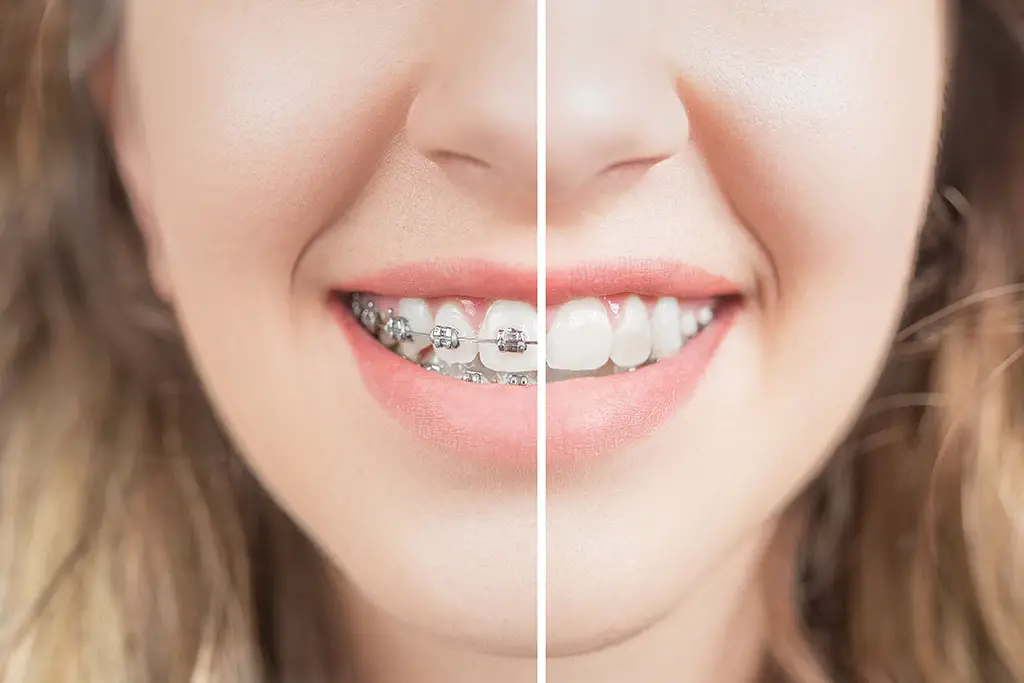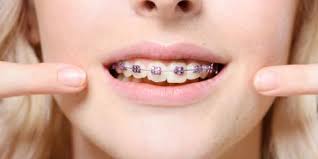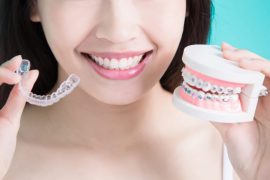What to do if Your Teeth Are Shifting After Treatment (tips)
Teeth moving back after braces
Teeth shifting after braces, When wearing Invisalign or braces, your teeth were secured in place. During treatment, Dr makes minor adjustments that cause the teeth to shift a minuscule amount each time. Since your teeth no longer have the pressure once treatment is complete, there is a normal settling process that occurs. In some cases, these tiny shifts can actually improve the bite even more.
Additionally, your body undergoes constant change. Just as the levels of elastin and collagen in our skin decrease over time and lead to wrinkles, the structures that secure our teeth in place also experience aging. The tongue also causes normal wear and tear that can influence changes in tooth placement. That is why expecting zero tooth movement once your braces are removed is unrealistic.
Why It Happens
First things first, take a deep breath. Our teeth, our whole bodies even, are always changing. Orthodontics help to move your teeth in certain directions, but once they are no longer there to keep your teeth in specific positions, the following factors all come into play and can encourage your teeth to move:
- Aging
- Genetics
- Tooth grinding
- Tooth loss
If you haven’t worn your retainers as recommended, it’s very likely that you’ll experience orthodontic relapse. Relapse refers to the tendency of teeth to move back to where they were before orthodontic treatment. Even if you don’t visibly notice that your teeth have moved, you’ll be able to tell if you experience some discomfort when you put on your retainers again after a long period of time not wearing them.
How to Correct It

If your teeth shift after your orthodontic treatment, you may be able to fix the shifting before it gets severe with new retainers. Sometimes, orthodontic relapse can be treated with Invisalign.
Call your Dr office as soon as you notice your teeth shifting, whether it’s right after braces or a few months/years down the line, or if your retainers no longer fit. When orthodontic relapse is ignored for too long, you might need to begin a more intensive orthodontic treatment again. You don’t want all of the time and effort you put into straightening your teeth in the first place to go to waste!
When Teeth Shifting After Braces Becomes a Concern
Although it is normal to experience some natural settling of your teeth once your treatment is complete, significant changes or shifting front teeth are cause for concern. If you believe this is happening, you should notify your Dr office immediately.
Typically, if de Dr notice unwanted shifting, a simple retainer tweak can solve the issue. If the shifting has occurred for a while, the solution may become more complicated. For instance, certain patients may need to wear a clear aligner every day for several months. More severe cases may require a second, shorter round of braces. If a patient has ignored the issue for years, treatment may need to be completely restarted.
Wearing Retainers Following Braces
While the natural settling process may still cause you to notice a slight degree of tooth shifting even if you wear your retainer, using a retainer is the best way to keep shifting to a minimum and preserve your bite. Because the majority of settling occurs immediately after treatment is completed, patients are usually recommended to wear their retainer on a full-time basis for the first few post-treatment months. Once we evaluate your teeth and approve their placement, you may be able to wear the retainer only at night. Almost all patients will need to use their retainer for their entire life. Typically, wearing the retainer a few nights each week is enough to prevent teeth from reverting to their original position. Failing to consistently wear your retainer can lead to complications in the future.
The sooner you tackle the issue of shifting teeth once your braces are removed, the sooner it can be controlled. If you are worried that your teeth are shifting beyond the natural settling process, consider contacting our practice immediately. Even if you weren’t entirely committed to wearing your retainer consistently, it is never too late to get back on track.
Tips To Prevent Your Teeth From Shifting After Braces

If you go through all of the time, effort and expense of getting braces, then the last thing that you want is for your teeth to shift once your braces come off. This is the last thing that Orthodontics wants as well, so they will likely do all in their power to stop this from happening.
Wear Your Retainer Regularly
The easiest way to stop your teeth from shifting after you get your braces off is to wear your retainer regularly. As soon as your braces come off, Dr may have some plastic retainers made for you from molds of your teeth. These help to keep your teeth in place while your regular retainers are created. Your plastic retainers should be worn at all times, except when you are eating or brushing your teeth.
Your regular retainers will either be fixed or removable. If your retainers are fixed in your mouth, then you won’t have to worry about wearing them because they are always there. You will also wear your removable retainer all of the time at first, but it is up to you to remember to keep it in. Over time, your orthodontist may then cut this back to just wearing your retainer at night.
Take Action If You Notice Your Teeth Are Moving
If you notice that your teeth are moving, it is important that you take action right away. Your teeth may be moving for a variety of reasons, even if you are trying to wear your retainer as you should. If your wisdom teeth come in after your braces have been removed, then this can cause all of your teeth to shift closer together. The best way to stop this from happening is to have your wisdom teeth removed as soon as possible.
Another reason why your teeth may be shifting is because your retainer no longer fits properly. This may be because you didn’t wear it enough and your teeth shifted little by little, or because it somehow became bent or damaged. If you have a permanent retainer, it is important to make sure that the wire is still in place and none of the bonds have come off of your teeth because this can also cause your teeth to move out of alignment. In any case, going into your orthodontist and having your retainer fixed, or a new retainer made, is a great way to ensure that your teeth don’t move any further.
Take Care Of Your Teeth
If you don’t take proper care of your teeth, then they are at risk of decay. This decay can eat away at your teeth and cause them to become damaged. If the shape of your tooth changes, due to decay, then the rest of your teeth may shift around it. By going in for regular checkups with your dentist, you help ensure that your teeth remain in good health, thus reducing the risk of your teeth shifting due to damage or decay.
Visiting your Orthodontics regularly the first 6 months after getting your braces off, and then every year or so after that, can help to ensure your teeth are where they need to be as well. They will also inspect your retainer at this time and make any necessary changes.
Why do teeth move after braces?
There are many reasons why your teeth shift after you’ve worn braces. Every day your teeth are under different pressures. When you speak, your tongue repeatedly presses against your teeth. When you chew, your teeth come under repeated pressure. Even when you smile, or when you sneeze, various muscles in your mouth and in your face move. Over time, this can have an effect on the position of your teeth.
Besides these factors, things like ageing, grinding your teeth in your sleep, and even genetics can affect the position of your teeth. Unfortunately, teeth always follow the path of least resistance, so if there is nothing holding them in place, your teeth are liable to move.
Not wearing retainer after braces
There is only one thing that can be done to stop teeth from shifting – wearing your retainer. Your orthodontist probably recommended you to wear a retainer every day for many months. After this initial period, your dentists probably told you to continue wearing it for 3 to 5 nights a week for over a year. Some dentists recommend that you should wear your retainer for several nights a week for life.
Unfortunately, for many people, it’s too late for that. There is a whole generation of people who wore metal braces in their teenage years. After the ordeal of train-tracks is over, the last thing the average teenager wants is to wear a retainer. But without wearing a retainer as recommended by your orthodontist, you can end up paying the price for years to come.
Straightening teeth with a retainer
If you still have your old retainers lying around, you might feel tempted to wear them to move your teeth back. But this is not what retainers are designed for. If your teeth have moved significantly, your old retainer will obviously be uncomfortable to wear. But more importantly, if your old retainer does not fit accurately, it may damage your teeth.
In some rare cases, your orthodontist may confirm that you can still use your old retainers. But if your teeth have moved in any significant way, they will likely recommend a new set of braces. So what should you do after an orthodontic relapse?
Get your teeth straight again with Smilelign
The good news is that if you want to get your teeth straight again, it’s easier than ever. Smilelign clear braces are almost invisible, and are perfect for realigning teeth that have moved back after braces.
You can stop your teeth from shifting after braces by wearing your retainer regularly, contacting your Orthodontics at the first sign of movement and making sure that you take care of your teeth.

